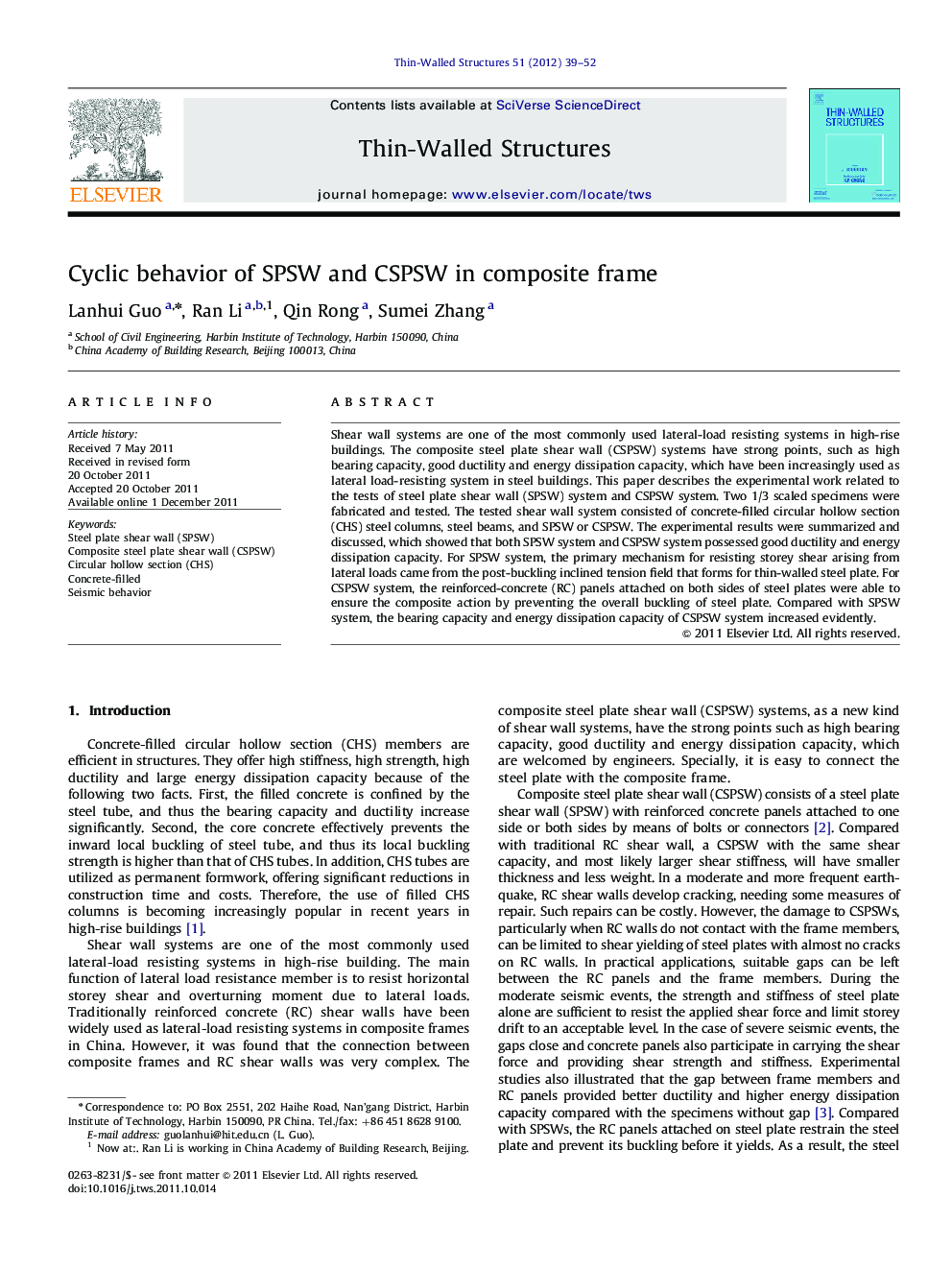| Article ID | Journal | Published Year | Pages | File Type |
|---|---|---|---|---|
| 309360 | Thin-Walled Structures | 2012 | 14 Pages |
Shear wall systems are one of the most commonly used lateral-load resisting systems in high-rise buildings. The composite steel plate shear wall (CSPSW) systems have strong points, such as high bearing capacity, good ductility and energy dissipation capacity, which have been increasingly used as lateral load-resisting system in steel buildings. This paper describes the experimental work related to the tests of steel plate shear wall (SPSW) system and CSPSW system. Two 1/3 scaled specimens were fabricated and tested. The tested shear wall system consisted of concrete-filled circular hollow section (CHS) steel columns, steel beams, and SPSW or CSPSW. The experimental results were summarized and discussed, which showed that both SPSW system and CSPSW system possessed good ductility and energy dissipation capacity. For SPSW system, the primary mechanism for resisting storey shear arising from lateral loads came from the post-buckling inclined tension field that forms for thin-walled steel plate. For CSPSW system, the reinforced-concrete (RC) panels attached on both sides of steel plates were able to ensure the composite action by preventing the overall buckling of steel plate. Compared with SPSW system, the bearing capacity and energy dissipation capacity of CSPSW system increased evidently.
► The cyclic behavior of SPSW and CSPSW systems was studied. ► RC panels effectively prevented the out-of-plane deformation of steel plate. ► The energy dissipation capacity of CSPSW increased compared with that of SPSW. ► The load-carrying capacity of CSPSW increased compared with that of SPSW. ► A new kind of connection detail between steel plate and RC panels was proposed.
